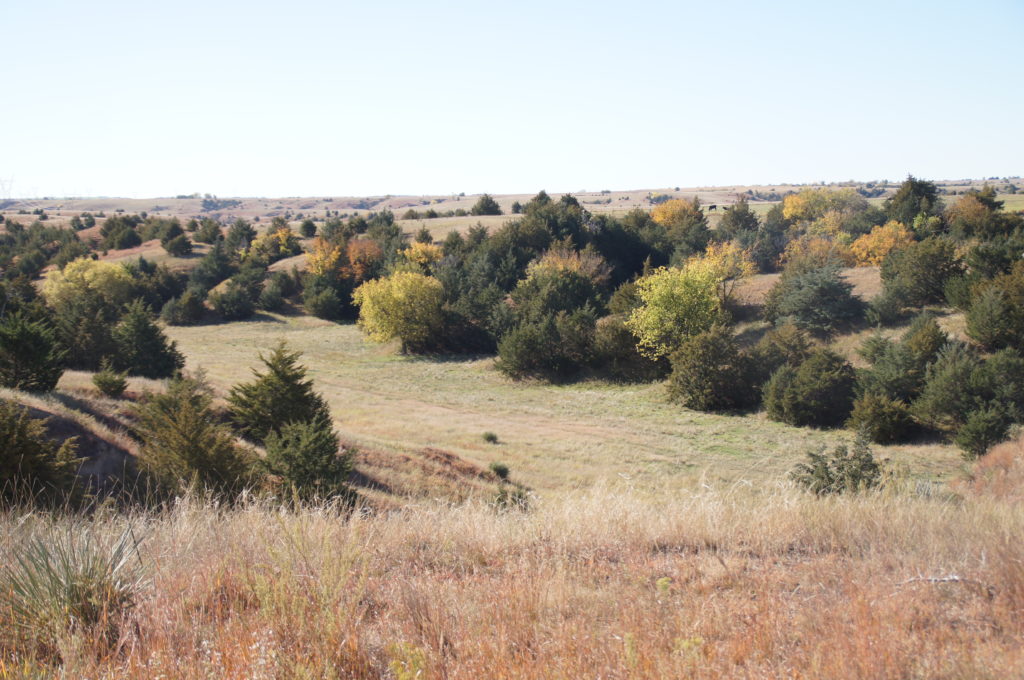Nebraska CRP Acres in High Demand

Farmers and landowners continually look for ways to make the most of their farming operations. Whether they focus on advancing technology, better machinery, or new irrigation techniques, increasing their bottom line is an ever-present pursuit. For many landowners in Nebraska, enrolling a portion of their farmland in the Conservation Reserve Program (CRP) is a good way to diversify their land asset while also benefitting the environment and preserving the integrity of their ground. Recently, however, it is proving much more difficult for Nebraska landowners and farmers to get their acres enrolled in the federal program due to such high CRP demand in Nebraska and across the Midwest.
The Conservation Reserve Program is a land conservation program that offers an annual rental payment and cost-sharing to landowners who agree to remove the selected piece of land from agriculture production and agree to incorporate certain types of beneficial plant species to the land. The CRP’s long term goals are to improve environmental and water quality, prevent soil erosion, and improve natural wildlife habitat. A typical CRP contract lasts 10-15 years.
The CRP is administered through the local Farm Service Agency (FSA) office. The USDA periodically holds a general signup for entering land into the program on a competitive basis, based upon environmental ranking and cost. The general sign up is announced by the Secretary of Agriculture, but there is no set schedule.
This year, Nebraska farmers who attempted to enroll some acres into the 49th general CRP program signup were likely met with disappointment: only 411,000 acres of the 1.8 million acres offered were actually enrolled—a 23 percent acceptance rate, marking it as the most selective round ever in the history of the program. For reference, in 2013, the USDA accepted almost 90 percent of the acres offered.
Why the low acceptance rate? The 2014 farm bill established a cap on the program of 24 million acres—a number that is 35 percent below the peak enrollment of 36.8 million acres, achieved in 2007. The lowered cap occurred when policy makers were confident that the higher commodity prices farmers enjoyed had also lessened their interest in enrolling those profitable acres into CRP, resulting in budgetary savings for government.
The story has changed, of course, and in the face of declining crop prices, farmers are once again looking for ways to make a profit, and the CRP program is one option: The prospect of receiving a rental payment for CRP land for a number of years is seen as a viable option for many landowners in the country.
USDA secretary Tom Vilsack says, “When Congress begins to deliberate the 2018 farm bill, they’re going to be faced I think with a demand to rethink the cap on CRP. The deliberation should not begin with ‘You have to save an artificial dollar amount,’ but it should really look at what the demand and need is.”
Are you looking for ways to make your land investment more profitable? Feel free to contact us at UFARM—we are experts at helping landowners reach their goals!
Sources consulted: Mercier, Stephanie. “Why is the Conservation Reserve Program ‘Trending’ Again?” Agweb.com. Farm Journal. 13 May 2016. Web. 29 Jun. 2016. Wiklund, Jared. “Record Landowner Demand for CRP Met with Extremely Low Acceptance Rate.” Pheasants Forever.org. Pheasants Forever. Web. 29 Jun. 2016.

